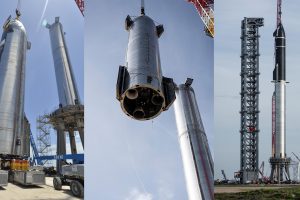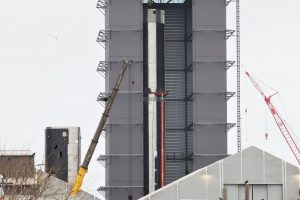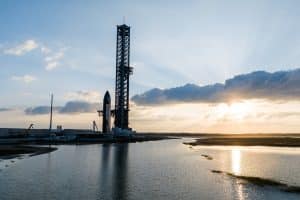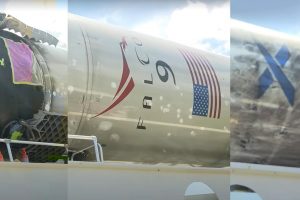Following several incomplete attempts in April, June, August, and September, NASA’s first Space Launch System (SLS) Moon rocket has almost aced a vital prelaunch test on the seventh try.
NASA says that “all objectives were met” during the ten-hour test, which wrapped up around 4:30 pm EDT (20:30 UTC) on Wednesday, September 21st. Despite the rocket running into multiple additional issues, some old and others new, the agency was confident enough in the preliminary results of the wet dress rehearsal (WDR) – deemed a “cryogenic demonstration test” – to reaffirm that it’s still working towards a third launch attempt as early as September 27th.
That launch date is not set in stone, but NASA also hasn’t ruled out the window after the latest round of SLS testing. The agency will host a press conference on Friday, September 23rd, to provide its final decision and offer more details about the seventh wet dress rehearsal.
Despite NASA’s apparent confidence after the test, which was admittedly smoother than most previous SLS tests at the launch pad, it was far from smooth. The immediate story of the “cryogenic demonstration test” dates back to the SLS Artemis I rocket’s second so-called “launch attempt” on September 3rd. During that attempt, the launch was aborted well before SLS was ready when NASA detected a major hydrogen fuel leak around one of the quick-disconnect umbilical panels that fuels and drains the rocket. Remote troubleshooting was unable to solve the problem, forcing NASA to stand down.
Over the last few weeks, teams inspected, tested, and repaired the faulty Tail Service Mast Umbilical (TSMU), preparing for a cryogenic proof test meant to verify that the issue was fixed. During that September 21st test, the TSMU still leaked significantly for the whole duration, but it did so more predictably and – unlike prior leaks – never violated the limits that would trigger a launch abort.
But near the end, a different umbilical panel developed a significant hydrogen leak that did violate those launch constraints, meaning that NASA would have likely had to stand down yet again if it had attempted to launch before completing additional testing. The test was completed successfully, but its goals and constraints were not the same as those facing a launch.
A NASA-developed rocket leaking hydrogen is unfortunately a tale as old as time. That the agency that struggled with hydrogen leaks throughout the 30-year career of the Space Shuttle appears to be just as flabbergasted by nearly identical problems on a new rocket – SLS – that has Shuttle ‘heritage’ on almost every square inch is not surprising, even if it is somewhat embarassing.
Liquid hydrogen fuel always has been and likely always will be a massive pain to manage in any rocket, but especially in a large rocket. As the smallest element in the universe, it is fundamentally leak-prone. Combined with the fact that it only remains liquid below the extraordinarily low temperature of -253°C (-423°F), generates ultra-flammable hydrogen gas as it continually attempts to warm to a more stable temperature, and naturally embrittles most metals, it’s an engineering nightmare by almost every measure.
For all that pain, hydrogen does provide rocket engineers exceptional efficiency when properly exploited, but even that positive aspect is often diminished by hydrogen’s ultra-low density. For rocket stages that have already reached orbit, hydrogen-oxygen propellant offers unbeatable efficiency. But for a rocket stage that will never be used in orbit, like the SLS core stage, hydrogen fuel is rarely worth the tradeoffs – a reality that SLS is unfortunately providing a strong reminder of.
Demonstrating the Groundhog Day-esque nature of NASA rockets and hydrogen leaks, the same leaky TSMU panel that aborted SLS’ September 3rd launch attempt (sixth WDR) and had to be fixed and retested on September 21st also caused a hydrogen leak that partially aborted the rocket’s third wet dress rehearsal attempt in April 2022. NASA then rolled the rocket back to the Vehicle Assembly Building (VAB), where workers spent almost two months inspecting and reworking the fuel TSMU and fixing other issues. During its first test (WDR #4) after rolling back to the pad in June, the same fuel TSMU leaked and NASA had to return the rocket to the VAB again to fix the problem.
The fuel TSMU then leaked on the SLS rocket’s first launch attempt (really WDR #5), but the problem was resolved and was not what caused NASA to stand down. It was, however, a primary reason behind NASA’s second aborted launch attempt (WDR #6). With any luck, the eighth time will be the charm.





